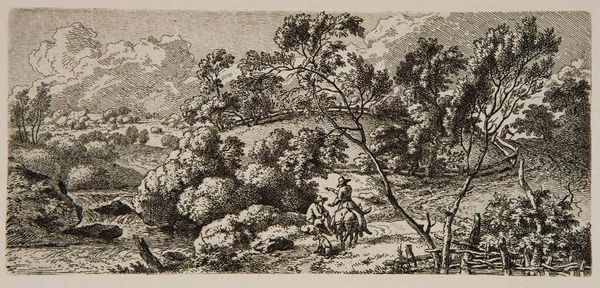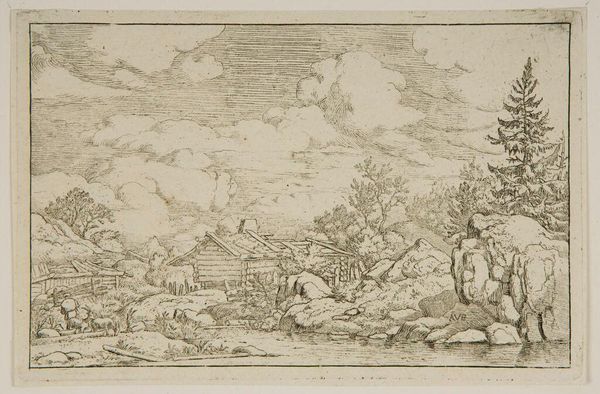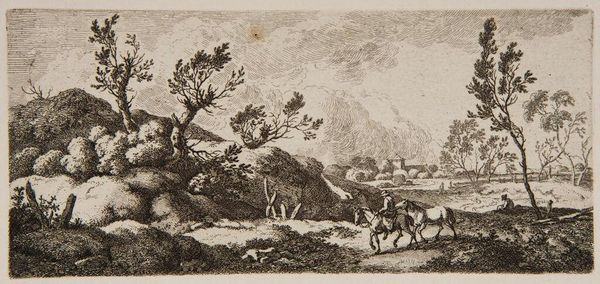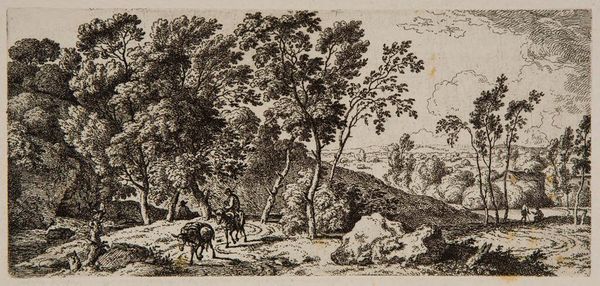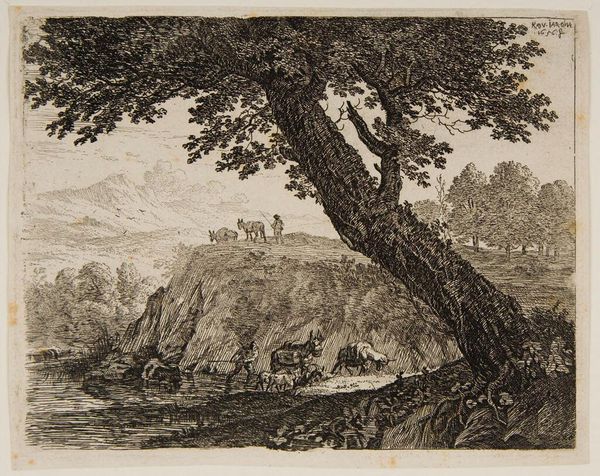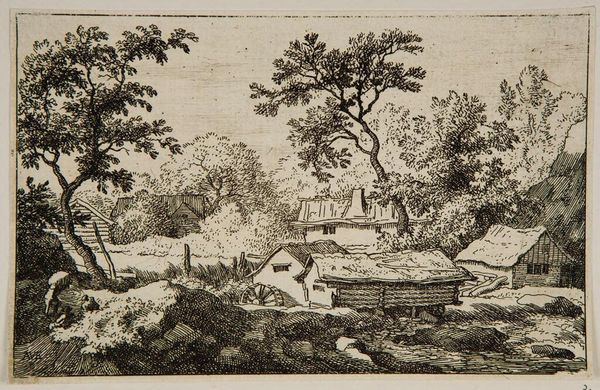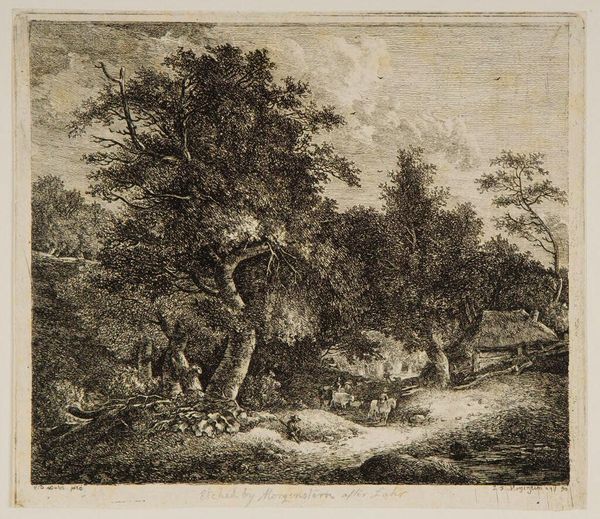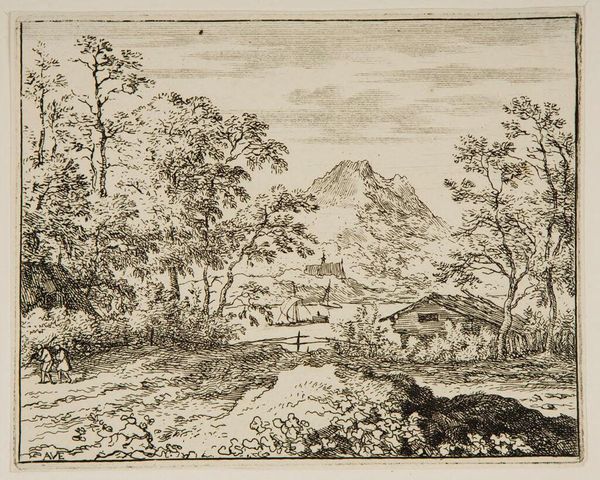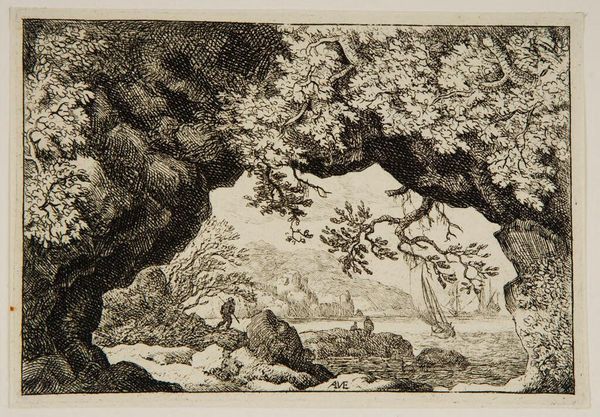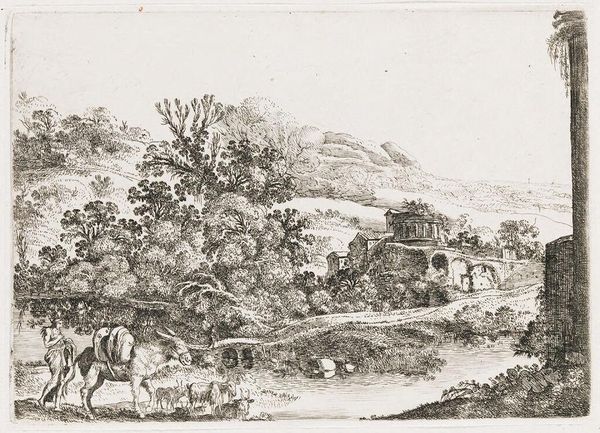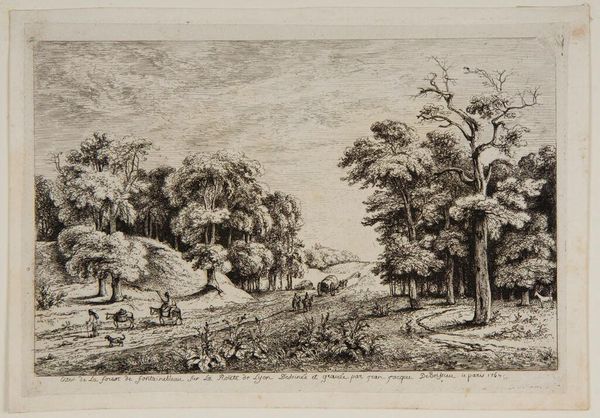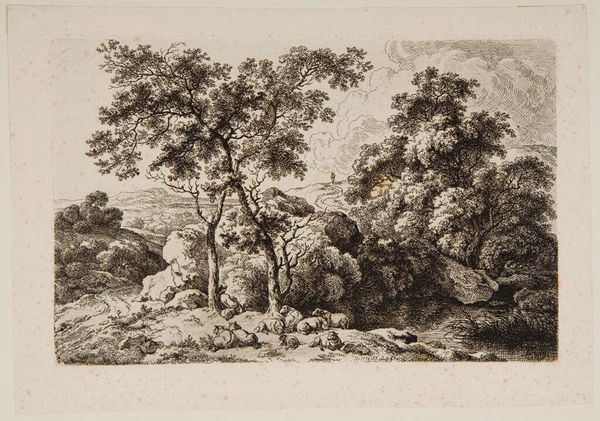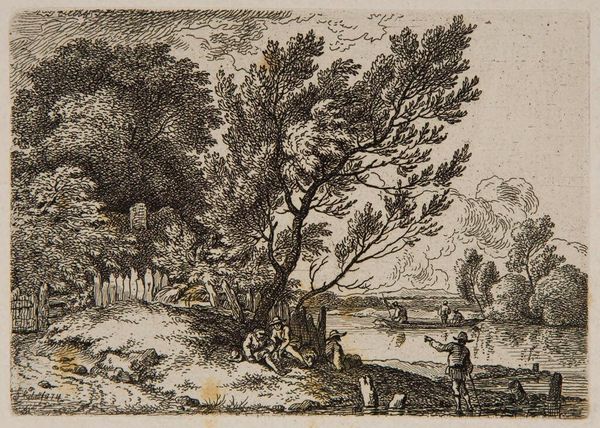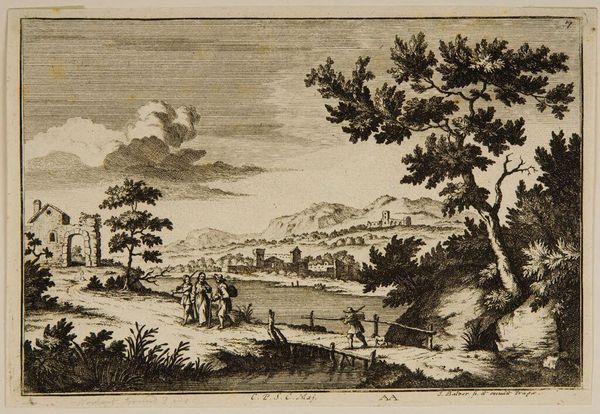
Copyright: CC0 1.0
Curator: Looking at Ferdinand Kobell’s "Man Digging in a Sandpit," I’m struck by the sheer labor conveyed through a simple etching. Editor: Yes, there's an immediate sense of toil. The figure, dwarfed by the landscape, is engaged in what appears to be backbreaking work. It evokes questions of class and labor. Curator: Precisely. Kobell, active in the late 18th century, was known for his landscape etchings. It reflects the period's growing interest in portraying rural life and labor, though often through a romanticized lens. Editor: Romanticized, perhaps, but also revealing. The figure's isolation speaks to a broader narrative of human struggle against nature and the socio-economic systems of the time. Who benefits from this man's labor? Curator: An essential question. Kobell's landscapes were popular among the rising bourgeoisie. They reflect a certain ownership and control over the land and its resources. Editor: And viewing this now, it's crucial to consider the historical context of exploitation and inequality embedded in these seemingly pastoral scenes. Curator: Absolutely. Engaging with art involves constant re-evaluation. I’m thankful we got to share it today. Editor: Me too. There are stories in every landscape.
Comments
No comments
Be the first to comment and join the conversation on the ultimate creative platform.
